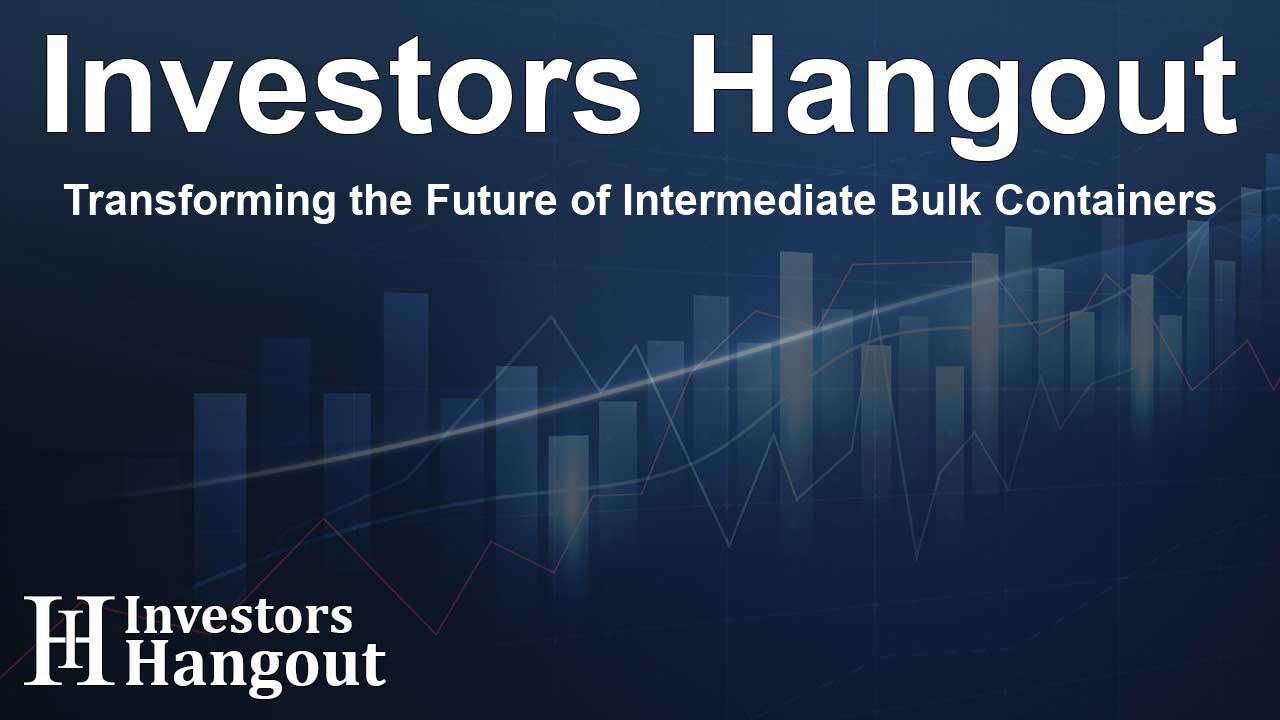Transforming the Future of Intermediate Bulk Containers

Understanding the Growth of Intermediate Bulk Containers
The global intermediate bulk container market is set for remarkable growth, anticipated to increase by USD 4.12 billion from 2025 to 2029. This evolution is largely driven by the robust demand from the construction industry, which has embraced intermediate bulk containers as vital tools for material handling, especially during periods of market resurgence.
Market Dynamics Fueling Growth
Revival in Demand
The revival of global industrial activities following recent economic challenges has significantly boosted the need for intermediate bulk containers. As a critical element in the manufacturing and construction industries, these containers offer efficient solutions for transporting materials. The demand is also supported by the growth in manufacturing equipment parts and components, further encouraging the use of intermediate bulk containers across diverse sectors.
The Role of AI in Market Transformation
Artificial intelligence is playing a pivotal role in redefining market dynamics, with companies leveraging data insights for better demand forecasting, material optimization, and operational efficiencies. This technological transformation is set to streamline processes, making the intermediate bulk container market more agile and responsive to consumer needs.
Challenges Ahead
While the outlook remains positive, the market also faces challenges. The volatility of raw material prices poses significant risks. Companies in the sector must navigate fluctuating costs while maintaining efficient production practices. Additionally, compliance with regulatory standards and sustainable practices is becoming increasingly critical as environmental concerns gain traction across industries.
Market Segmentation: Key Insights
Types of Intermediate Bulk Containers
Intermediate bulk containers come in various materials, including plastic, metal, and corrugated options. Each type serves distinct purposes, allowing companies to select containers that best fit their operational needs. For instance, metal containers are preferred in the chemical and petrochemical industries due to their durability and strength.
Exploring the Impact of Sustainability
Sustainability remains a central theme in the evolution of the intermediate bulk container market. Many businesses are shifting toward eco-friendly materials, reinforcing their commitment to reducing carbon footprints. This trend is not only beneficial for the environment but also aligns with consumer expectations for sustainable practices.
Regional Contributions
Different regions play varying roles in the market landscape. Emerging economies, particularly in the Asia-Pacific region, are witnessing substantial growth in demand for intermediate bulk containers, contributing significantly to global market dynamics. Moreover, established markets like North America and Europe continue to uphold strong demand driven by their industrial base.
Conclusion: The Future Looks Bright
The future of the intermediate bulk container market appears promising, buoyed by increasing demand from construction and the adaptation of advanced technologies. As industries evolve, the focus on sustainability and efficiency will be crucial for businesses seeking to maintain a competitive edge in this growing market.
Frequently Asked Questions
What drives the growth of the intermediate bulk container market?
The growth is primarily driven by high demand from the construction industry and a revival in global industrial activities following economic challenges.
How does AI influence the intermediate bulk container market?
AI influences the market by providing data insights that improve demand forecasting, material optimization, and operational efficiencies to streamline processes.
What challenges does the market face?
Challenges include volatile raw material prices and the need for strict compliance with environmental regulations and standards.
Which materials are most commonly used for intermediate bulk containers?
Common materials include plastic, metal, and corrugated options, each selected based on the specific application and industry requirements.
Why is sustainability important in this market?
Sustainability is vital as it aligns with environmental concerns and consumer expectations, prompting businesses to adopt eco-friendly materials and practices.
About Investors Hangout
Investors Hangout is a leading online stock forum for financial discussion and learning, offering a wide range of free tools and resources. It draws in traders of all levels, who exchange market knowledge, investigate trading tactics, and keep an eye on industry developments in real time. Featuring financial articles, stock message boards, quotes, charts, company profiles, and live news updates. Through cooperative learning and a wealth of informational resources, it helps users from novices creating their first portfolios to experts honing their techniques. Join Investors Hangout today: https://investorshangout.com/
Disclaimer: The content of this article is solely for general informational purposes only; it does not represent legal, financial, or investment advice. Investors Hangout does not offer financial advice; the author is not a licensed financial advisor. Consult a qualified advisor before making any financial or investment decisions based on this article. The author's interpretation of publicly available data presented here; as a result, they should not be taken as advice to purchase, sell, or hold any securities mentioned or any other investments. If any of the material offered here is inaccurate, please contact us for corrections.